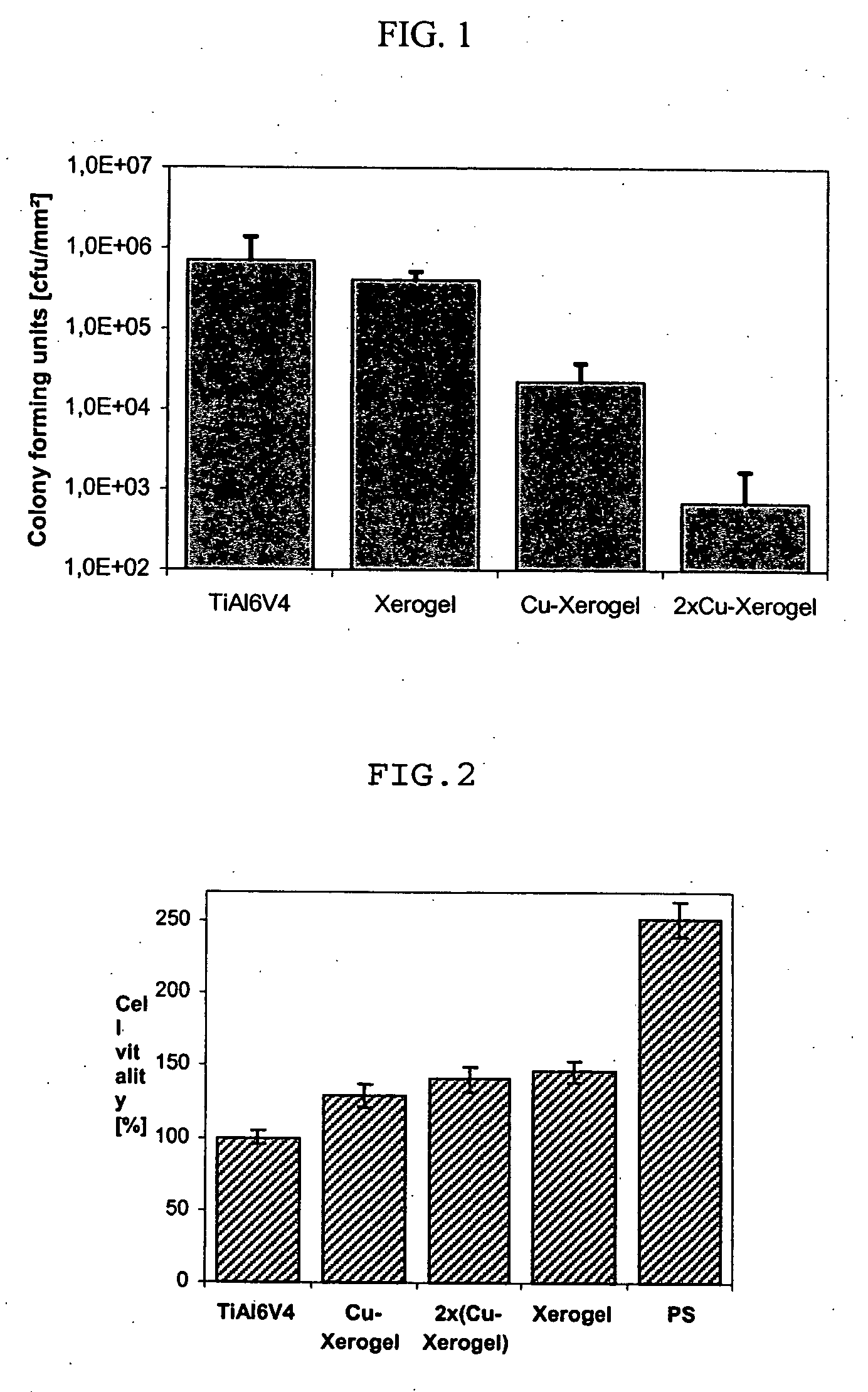Anti-infectious, biocompatible titanium coating for implants, and method for the production thereof
a biocompatible titanium and anti-infectious technology, applied in the field of anti-infectious, biocompatible titanium coating for implants, and the method of production thereof, can solve the problems of implant rejection, inability to carry out implant integration, and inability to inhibit the colonization of the body's own cells required for implant integration at the same tim
- Summary
- Abstract
- Description
- Claims
- Application Information
AI Technical Summary
Problems solved by technology
Method used
Image
Examples
example 1
[0050] 69.5 g of tetrabutoxy titanate were dissolved in 500 g n-butanol at rt and stirred for 2 h under inert gas conditions. Then copper acetate is added in portions up to cold saturation. The supernatant is drawn off the sediment and used as the coating.
[0051] The coating is prepared by immersing the test specimen TiAl6V4, glass or plastic with a take-up velocity of 1.5 mm / s. Afterwards, drying is performed for 1 h at room temperature and the coating is ceramized at 500° C. for 10 min.
[0052] If plastic is coated the ceramization step is omitted and instead curing for 1 h at 120° C. is carried out after drying.
example 2
Demonstration of the Mode of Action
[0053] To demonstrate the mode of action of the anti-bacterial coating studies were performed using clinically relevant bacterial strains (Staphylococcus aureus: ATCC25923, MRSA27065, and Staphylococcus epidermidis: ATCC35984, RP62a, SE 183) on the one hand and connective tissue cells (L292, mouse fibroblasts) and fetal osteoblasts (MC3T3-E1)) on the other hand. TiAl6V4 plates (14.5 mm diameter, 1 mm thickness) with an anti-bacterial coating according to the invention served as the sample material. For direct comparison the experiments were performed with cells and bacteria in the same cell culture medium (culture medium: 90% RPMI 1640 (=2.05 mM glutamine-containing serum), 10% FCS (fetal calf serum); incubation: 24 h, 37° C., 5% CO2, static culture, darkness) [0054] Cell lines: MC3T3-E1 (mouse osteoblasts) [0055] L292 (mouse fibroblasts)
[0056] 24-well culture dishes, polystyrene
[0057] inoculum: 120,000 cells / ml and well, 1 g phase, passage 6
[0...
PUM
| Property | Measurement | Unit |
|---|---|---|
| thickness | aaaaa | aaaaa |
| thickness | aaaaa | aaaaa |
| thickness | aaaaa | aaaaa |
Abstract
Description
Claims
Application Information
 Login to View More
Login to View More - R&D
- Intellectual Property
- Life Sciences
- Materials
- Tech Scout
- Unparalleled Data Quality
- Higher Quality Content
- 60% Fewer Hallucinations
Browse by: Latest US Patents, China's latest patents, Technical Efficacy Thesaurus, Application Domain, Technology Topic, Popular Technical Reports.
© 2025 PatSnap. All rights reserved.Legal|Privacy policy|Modern Slavery Act Transparency Statement|Sitemap|About US| Contact US: help@patsnap.com

